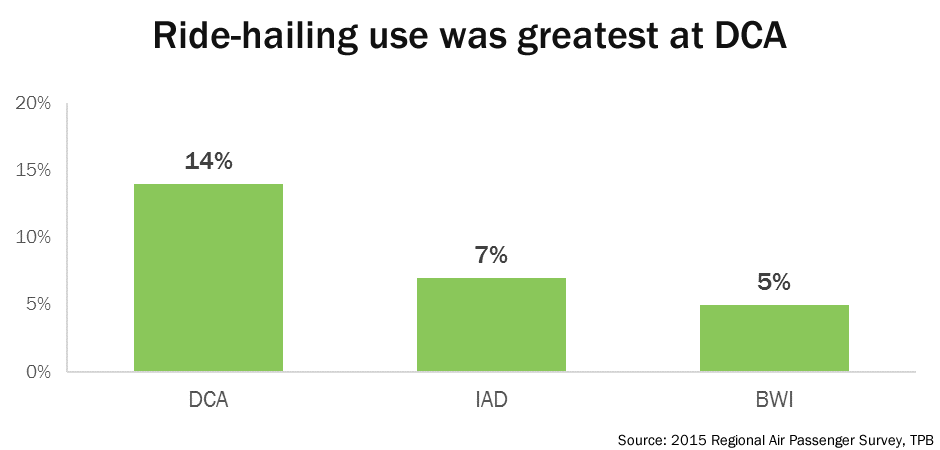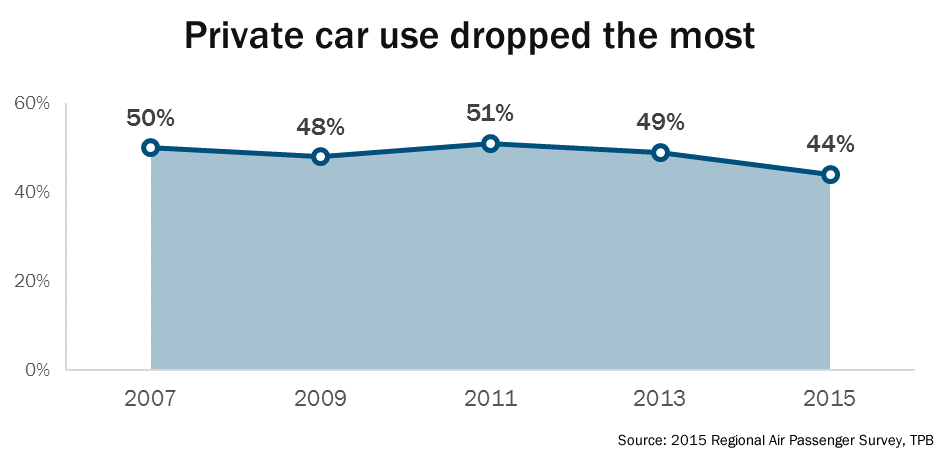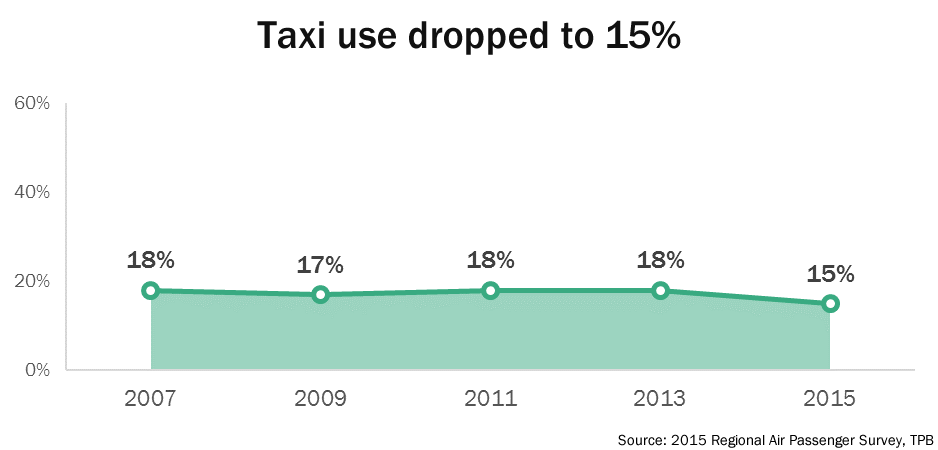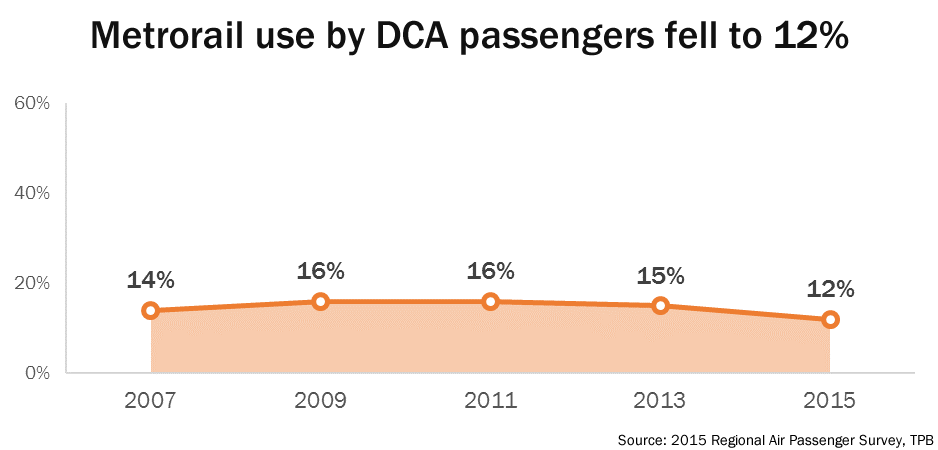In 2015, fewer local air passengers used a private car, taxis, or Metrorail to get to the region’s three major airports. New ride-hailing options like Uber and Lyft are thought to be the main cause of these changes.
Last month the TPB released the initial findings of its latest Regional Air Passenger Survey, conducted in late 2015. The survey gathered data from more than 24,000 departing passengers at the region’s three major commercial service airports: Baltimore-Washington International/Thurgood Marshall (BWI), Ronald Reagan Washington National (DCA), and Washington Dulles International (IAD).
The survey asked passengers about their choice of airport, the purpose of their travel, and how they got to the airport, including whether they used app-based ride-hailing services like Uber or Lyft. The survey found that this new transportation option is changing the ways people access the region’s airports, with the biggest effects at DCA.
MORE: Get the full summary of initial findings from the 2015 Regional Air Passenger Survey
App-based ride-hailing is used to get to all three airports, but especially DCA
In the latest survey, nearly 1 in 10 respondents said they used a ride-hailing service to get to the airport. Passengers at all three airports reported using these services, but DCA saw the biggest impact, with 14% of respondents reporting having done so. At Dulles, the share was just 7%, and at BWI it was 5%.

This difference among the airports is most likely explained by DCA’s proximity to downtown DC and Arlington, the so-called “urban core” of the region, where residents and visitors are already more likely to use the services for other trips, where it may be easier to find a driver, and where trip distances to the airport are not as great.
As ride-hailing has grown, the use of private vehicles has gone down
What have the effects been on other modes of access? The 2015 survey found that fewer people are choosing to drive or get a ride from friends or family to the airport. Between 2007 and 2013, the share of locally originating air passengers saying they used a private car to travel to the airport hovered between 48% and 51%. But in the most recent survey, that number fell to 44%, the lowest it’s been in at least the last 10 years.

Ride-hailing is thought to be one of the main reasons for the drop. These services can save travelers the additional time and cost of parking at the airport, and can be more convenient than asking family or friends for a ride.
Taxis and Metrorail became less popular in 2015, too
The new ride-hailing apps appear to be affecting taxi and Metrorail use, as well. After years of a stable 18% mode-share for taxis, the 2015 survey showed taxi use drop to 15% across the three airports. The biggest changes again came at DCA, where taxi use dropped from 31% in 2013 to 25% in 2015. Dulles saw a 3% drop during that time period. At BWI, taxi use has remained relatively flat, suggesting that ride-hailing has had little or no effect there.

At DCA, Metrorail use as a proportion of ground transportation dropped to a 10-year low in the most recent survey. About 12% of respondents reported taking Metrorail to catch their flights at National, down from 15% in 2013, and 16% in 2011.
Ride-hailing services could be affecting taxis because they sometimes provide cheaper fares, their at-the-door pick-ups can be easier for passengers traveling with heavy luggage, and the ease and predictability of using smartphone apps to schedule pick-ups and avoid traffic can save stress for travelers trying to make their flights.

Metrorail’s declining mode-share among passengers at DCA could be the result of safety and reliability concerns, leading travelers to choose other options they deem to be safer or more likely to get them to the airport on time. And new tools for assessing potential transit delays and service disruptions can lead people to choose other modes for their trip.
MORE: Get the full summary of initial findings from the 2015 Regional Air Passenger Survey
The TPB conducts its Regional Air Passenger Survey every two years to help airport officials, and local, state, and regional planners understand what improvements need to be made to maximize the benefit the region's airports bring to the people who live and do business here. The survey gathers data from approximately 24,000 departing air passengers at Baltimore-Washington International/Thurgood Marshall (BWI), Ronald Reagan Washington National (DCA), and Washington Dulles International (IAD) airports.